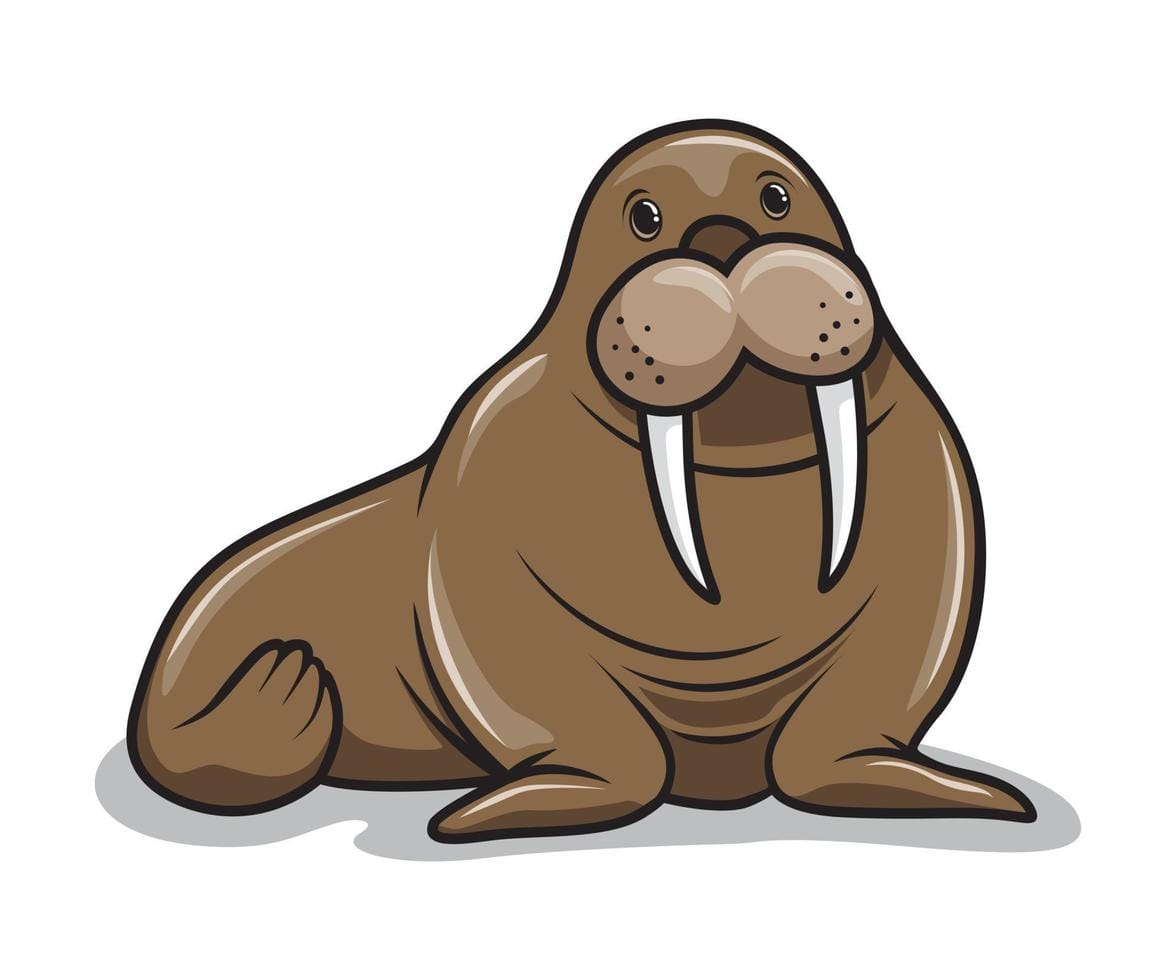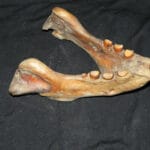Walruses, with their impressive tusks and charming whiskers, are icons of the Arctic. These magnificent creatures, perfectly adapted to one of Earth’s harshest environments, face an uncertain future as climate change threatens their icy domain. Journey into the world of walruses, exploring their fascinating lives, the challenges they face, and the importance of protecting these gentle giants and their frozen paradise.
Walrus 101: Unveiling the Giants of the Arctic
Walruses, the gentle giants of the Arctic, are keystone species, playing a vital role in maintaining the delicate balance of their ecosystem. These fascinating creatures, remarkably adapted to survive in one of the toughest places on Earth, rely on a unique combination of physical features and social behaviors.
One of their most striking characteristics, their tusks, are much more than just impressive ornaments. Walruses use these ivory tools to hoist themselves onto slippery ice floes, defend themselves against predators, and dig for clams—their favorite food.
Their thick layer of blubber provides essential insulation in frigid waters, while their highly sensitive whiskers act as underwater detectors, helping them locate food in murky depths. Walruses can also hold their breath for an astonishingly long time, a crucial adaptation for diving deep in search of clams and other benthic delights.
Primarily found in the Arctic Ocean and surrounding seas, these social butterflies congregate in massive herds on dwindling ice floes, seeking warmth and protection. Sadly, this dependence on sea ice makes them particularly vulnerable to climate change. As the Arctic warms and ice melts at an alarming rate, walruses are feeling the heat.
What Lies Beyond the Tusks? Unraveling the Mysteries of Walrus Life
Those impressive tusks, more than just ivory spears, are actually versatile tools essential for survival, social standing, and shaping the Arctic landscape. Unveiling the mysteries of walrus life means understanding the crucial role of their tusks, from hauling themselves onto ice floes to navigating intricate social hierarchies.
Tusks: Not Just for Show
Icebreakers and Stairways
Imagine hauling your massive body out of freezing water onto a slippery ice floe – a regular activity for a walrus. Thankfully, they have tusks! Acting like ice picks, their tusks allow them to grip and heave themselves up. This “tooth-walking” is crucial for resting, giving birth, and escaping predators like polar bears.
Underwater Excavators
In the murky depths, walrus tusks transform into digging tools. They use them to unearth tasty clams, snails, and other treats hiding on the ocean floor—like having built-in shovels for dinner!
Don’t Mess with Me!
Faced with a threat, a walrus isn’t afraid to brandish its tusks. These formidable weapons can deter a rival or fend off an attack, serving as a powerful deterrent.
Status Symbol and Social Cue
Size matters in the walrus world. The length and condition of their tusks reveal a walrus’s age, dominance, and breeding potential, functioning as a passport, resume, and personal ad all in one.
Feeling the Vibes: Are Tusks Sensory Superstars?
Scientists believe that nerve endings within walrus tusks could allow them to sense subtle vibrations and changes in water pressure. This sixth sense would make them masters of navigation, helping them find their way through murky water and perhaps even locate hidden prey!
More Than Just Ivory: Tusks and Culture
For centuries, indigenous Arctic peoples have recognized the beauty and value of walrus tusks, intricately carving them into figurines, jewelry, and tools. These artifacts reflect a deep connection between humans and walruses, embodying stories and traditions passed down for generations.
Trouble in Paradise: The Threats to Tusks and Walruses
Unfortunately, walruses and their magnificent tusks face growing threats from climate change and human activities. Shrinking sea ice forces them onto land, leading to overcrowding and fierce competition for resources. Pollution and habitat disturbance add insult to injury, putting these vulnerable giants at risk.
A Future for Walruses: Conservation in Action
Thankfully, people are working hard to protect walruses and their habitat. Organizations like the WWF are fighting for habitat protection and raising awareness about the importance of these magnificent creatures, while regulated hunting helps ensure sustainable populations.
The Takeaway: More to Discover
- Walrus tusks are multi-purpose tools vital for survival, defense, and social interactions.
- Those tusks might even be sensory organs, adding another layer of complexity to these fascinating creatures.
- Walrus tusks hold deep cultural significance for indigenous Arctic communities.
- Climate change and human activities pose serious challenges to walrus populations, making conservation efforts more crucial than ever.
- With ongoing research and dedicated conservation efforts, we can ensure that these iconic Arctic giants continue to thrive for generations to come.
The Walrus: An Arctic Icon Under Threat
Walruses, those iconic denizens of the Arctic, depend on a shrinking resource for their survival: sea ice. They use this vital habitat for everything from resting and giving birth to raising their young. As our planet warms, the melting ice creates a dangerous situation for these remarkable animals.
Their impressive tusks are multi-tools, essential for navigating icy waters, digging for clams, and even defending themselves against predators like polar bears. The longer the tusks, the older and more experienced the walrus.
Walruses are the social butterflies of the Arctic, often gathering in massive herds called haul-outs on those shrinking ice floes. This closeness helps them stay warm and protect their young, but it also makes them vulnerable if the ice breaks up unexpectedly.
Their thick layer of blubber, while great for insulation, makes them reliant on ice floes for rest. As apex predators, walruses play a crucial role in the delicate balance of the Arctic food web, primarily dining on clams and other bottom-dwelling creatures, helping to keep those populations in check.
Here’s the catch-22: the very ice they depend on is melting due to climate change. This forces them to travel farther for food and spend more time in the water, depleting their energy reserves.
Adding to their woes, the Arctic is facing increased industrial activity, like oil and gas exploration. This brings noise pollution, habitat disruption, and the risk of oil spills, all posing serious threats.
So, what’s being done?
Thankfully, people and organizations are working hard to protect these amazing creatures. International agreements aim to reduce greenhouse gas emissions, while efforts to establish protected areas in the Arctic give walruses safe havens from human disturbance.
You can help too! Make choices to reduce your carbon footprint, support organizations dedicated to Arctic conservation, and spread awareness about the plight of the walrus. By understanding the challenges they face, we can all contribute to ensuring a future for these iconic Arctic dwellers.
Dive Deep: Exploring the World of Walruses
Imagine a creature that can dive deeper than a basketball hoop is tall, sporting a pair of built-in shovels! That’s a walrus. These blubbery giants, built for the icy waters of the Arctic, possess bodies that tell stories of incredible adaptations. Not only can they plunge to depths of over 300 feet, but they also have some clever tricks to handle the pressure. Their bodies reroute blood flow to the most important organs when they take a deep dive, helping them conserve precious energy and stay underwater longer.
But what are they searching for down there? Their favorite snacks are clams and other shellfish hiding on the ocean floor. Finding these treats in murky water would be a challenge for most, but walruses have a secret weapon: their whiskers! These aren’t ordinary whiskers, though. They’re so sensitive that they can pick up tiny vibrations in the water, almost like having built-in metal detectors for clams!
Life as a walrus isn’t all about deep dives and tasty clams. They’re social butterflies of the Arctic, too! Female walruses are incredibly devoted mothers, fiercely protecting their young and teaching them the ways of the icy world. Male walruses, on the other hand, are known to put on quite a show when it’s time to find a mate. Think of it like a combination of singing, dancing, and showing off their strength, all to win the heart of a special lady walrus.
Sadly, these amazing creatures are facing a big challenge: climate change. The Arctic is warming up, and the sea ice that walruses depend on for resting, giving birth, and hunting is shrinking. This means less space for them and their young, leading to overcrowding and fierce competition for food. Some scientists worry that if we don’t do something, walrus populations might start to decline.
The good news is that people are working hard to help. Scientists are studying walrus behavior and how climate change is affecting them. They’re also working to create protected areas in the ocean where walruses can live safely. By learning more about these fascinating creatures and supporting conservation efforts, we can help ensure that these gentle giants of the Arctic continue to thrive for generations to come.
Walrus Photos: Unveiling the Arctic’s Majestic Giants
Now that we’ve explored the fascinating world of walruses, let’s dive a little deeper into some of their most remarkable features through captivating photos.
Those Tusks are More Than Just a Pretty Face
You can’t talk about walruses without mentioning those incredible tusks! These pearly white wonders are actually vital tools that help walruses thrive in their icy world, acting like a Swiss Army knife for Arctic survival! Males use their tusks to show off and compete for mates, while females are more practical, using theirs to protect their adorable pups from danger. Both males and females rely on their tusks to help them haul their massive bodies up onto slippery ice floes, even using them to chip away at the ice to create breathing holes. Talk about resourceful!
Cruising the Arctic: Home Sweet Icy Home
Walruses are found hanging out all over the Arctic, from the chilly waters of Canada to the frozen shores of Russia. They’re particularly fond of shallow coastal areas where there’s plenty of sea ice. Sea ice acts like a giant floating platform, giving them a place to rest, give birth, and soak up the sun (when it peeks out, that is!). But during the summer months, when the sea ice starts to melt, walruses have to find other places to chill. That’s when you might spot them huddled together on land or lounging about on massive icebergs. It’s like a giant walrus summer camp!
Deep Divers with a Knack for Finding Food
Don’t let their bulky bodies fool you – walruses are surprisingly graceful swimmers. These guys can dive down to depths of over 300 feet in search of a tasty meal! They’re mainly after clams and other creatures that live on the ocean floor and use their highly sensitive whiskers, which act like little underwater detectors, to locate their next clam snack.
Social Butterflies of the Arctic
Walruses are incredibly social animals. In fact, they love company so much that they form massive herds, sometimes numbering in the thousands! To keep things running smoothly in such large groups, walruses have developed many ways to communicate with each other. They use a variety of vocalizations, from growls and barks to whistles and clicks. They also communicate through body language, using their postures and movements to convey messages. And if that weren’t enough, they even use touch to strengthen their bonds. While males might get into a bit of a tussle now and then over a potential mate, for the most part, walruses are pretty peaceful creatures who enjoy each other’s company.
Walrus Wisdom: Some Final Thoughts
Walruses are more than just blubbery creatures with tusks. They are highly adaptable marine mammals with fascinating lives and important roles to play in the Arctic ecosystem. Their future is closely tied to the health of the Arctic sea ice, which is, unfortunately, facing threats due to climate change. Understanding walruses and their unique characteristics is not just about appreciating their majesty; it’s about recognizing the importance of protecting them and their fragile habitat.
[Walrus Videos and the Arctic Wilderness]
We’ve already discussed what makes walruses so fascinating, but let’s dive even deeper into their world through the magic of video! These aren’t just big, blubbery animals; they’ve got personalities as big as their tusks, and videos let us see those personalities in action.
Getting Up Close and Personal
Ever wondered what it’s like to hang out with a walrus? Videos take us right there, swimming alongside these majestic creatures in their icy world. You can practically feel the chill of the water and hear the sounds of their calls. And those baby walruses? Get ready for some serious cuteness overload! Watching them interact with their moms shows just how intelligent and caring these animals really are.
Unveiling the Secrets of Walrus Behavior
Videos are like being a fly on the wall during a walrus gathering! They give us a sneak peek into how walruses behave in the wild, from their competitive mating rituals to their ingenious ways of finding food using their super-sensitive whiskers to locate clams and other tasty treats buried in the ocean floor.
A Changing World: Habitat and Challenges
The Arctic is facing some serious challenges due to climate change, and walruses are feeling the heat—or rather, the lack of ice. Videos show us firsthand how their world is changing. The shrinking ice makes it harder for them to find places to rest, give birth, and hunt for food. It’s a stark reminder of how interconnected everything is and how important it is to protect our planet.
A Glimmer of Hope
But it’s not all doom and gloom. Videos also highlight the amazing work being done to help walruses and their Arctic home. Seeing these conservation efforts in action gives us hope and inspires us to do our part, even in small ways.
What We Can Learn From Walrus Videos
- Walruses are more than just big, funny-looking creatures. They’re complex, intelligent animals with fascinating lives.
- Climate change is a real and present danger to walruses and their Arctic habitat.
- We can all make a difference. By supporting conservation efforts, we can help protect these amazing animals for generations to come.
So the next time you’re scrolling through videos online, take a detour to the Arctic and spend some time with the walruses. You’ll be amazed by what you learn!
Are Walruses Truly Endangered?: Navigating a Complex Issue
We all know walruses—those massive, blubbery creatures of the Arctic with their impressive tusks. But are they endangered? The truth is, it’s complicated. While walruses are tough and adaptable, they’re facing challenges that are making life more difficult.
One of the biggest issues is the shrinking sea ice. Sea ice is essential for walruses. They use it for everything – resting, giving birth, and finding food. As the Arctic warms up, that ice is melting away at an alarming rate. This forces walruses to crowd together on land, leading to competition for resources and putting their young calves at risk.
Climate change isn’t the only threat. While hunting isn’t as big of a problem as it used to be thanks to regulations, pollution from our activities is a growing concern. Imagine harmful chemicals contaminating the water and food sources walruses depend on – that’s the reality they face. All the noise from ships and other human activities can disrupt their communication and make it harder for them to navigate and find mates.
Walruses aren’t just another animal in the Arctic; they’re a vital part of the ecosystem. As top predators in their icy domain, they play a critical role in keeping other populations in check. If their numbers dwindle, it could create a domino effect, impacting the entire delicate balance of life in the Arctic.
The good news is, it’s not all doom and gloom. People are working hard to protect walruses. As we learn more about the threats they face, we’re better able to make informed decisions about how to help them. This includes reducing our impact on climate change, minimizing pollution, and ensuring their critical habitats are protected.
So, are walruses truly endangered? The answer isn’t simple. There are a lot of factors at play, and the situation is constantly evolving. Scientists are closely monitoring their populations. But one thing’s for sure: walruses need our help, and by understanding the challenges they face, we can all do our part to ensure these magnificent creatures continue to thrive in their icy home.
From Blubber to Whiskers: Exploring the Unique Adaptations of Walruses
We’ve already discussed how impressive walruses are, but their incredible adaptations allow them to survive in one of Earth’s harshest environments.
Blubber: A Walrus’s Personal Winter Coat (and Snack Pantry)
Imagine having a built-in wetsuit so effective that you could hang out in freezing water without a care in the world. That’s what blubber does for walruses! This thick layer of fat acts as a superpowered insulator, keeping them warm even when the water is close to freezing.
Blubber also serves as a biological pantry! When food is hard to come by, a walrus can rely on its blubber reserves for energy.
Whiskers: More Than Just a Fashion Statement
Imagine trying to find a tasty clam in murky, dark water. Luckily, walruses have a secret weapon: their impressive whiskers! These aren’t your average whiskers, though. They’re long, super-sensitive, and act like a combination of a GPS and a fish finder. These specialized whiskers pick up vibrations and changes in water pressure, allowing walruses to navigate through murky depths, locate tasty treats like clams and mussels, and even sense predators.
Tusks: The Walrus’s Multi-Purpose Tool
You might think walrus tusks are just for show. But these ivory tusks are actually incredibly versatile tools! Need to pull yourself out of the icy water? Tusks! Need to break a breathing hole in the ice? Tusks! When it comes to establishing dominance or attracting a mate, bigger tusks give a walrus a serious advantage.
Beyond Blubber, Whiskers, and Tusks: A World of Ongoing Discovery
While we’ve learned a lot about walruses, there’s still much more to uncover. Scientists are constantly making new discoveries about these fascinating creatures, from their complex social behaviors to their adaptation strategies. What we thought we knew about walruses might change as researchers learn more, which is part of what makes studying the natural world so exciting!
Key Points About Walruses:
- Giant Arctic Mammals: Walruses are large, blubbery creatures that are crucial to the Arctic ecosystem.
- Effective Tusks: Their tusks are not only impressive but also serve as tools for climbing ice floes, digging for food, and defense.
- Exceptional Adaptations: Walruses have a thick blubber layer for insulation, whiskers for food detection, and a long breath-holding capacity for underwater foraging.
- Two Main Species: Atlantic and Pacific walruses inhabit the Arctic Ocean and surrounding seas.
- Dependence on Sea Ice: Sea ice is vital for walruses as a resting, birthing, and raising ground, making them particularly vulnerable to climate change.
- Conservation Efforts: Regulations are in place to ensure sustainable hunting, while organizations like the WWF promote habitat protection and awareness.
- Complex Behavior: Walruses exhibit unique behaviors such as competitive mating rituals and strong maternal bonds.
- Symbol of Arctic Resilience: Walruses represent the adaptability and value of Arctic wildlife despite environmental challenges.
- Importance for Future Generations: Sustaining walrus populations is essential for the preservation of the Arctic ecosystem.
- Unveiling the Enigma: Mansoureh Khojasteh Bagherzadeh’s Public Appearances & Private Life in Iran - July 18, 2025
- Unveiling the Mystery: Mansoureh Khojasteh Bagherzadeh’s Husband: A Rare Glimpse into a Private Life - July 18, 2025
- Unveiling Masoud Khamenei’s Mother: Power, Influence, and Iran’s Future - July 18, 2025
















